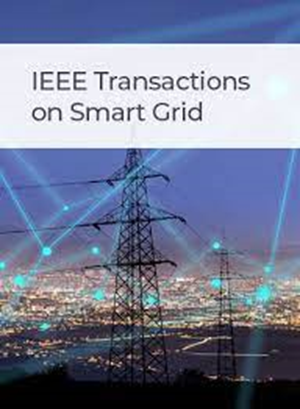Spike Talk:起源和神经编码方案翻译
IF 8.6
1区 工程技术
Q1 ENGINEERING, ELECTRICAL & ELECTRONIC
引用次数: 0
摘要
尽管未来电网的数字化提供了一些协调激励,但信息和通信技术(ICT)的可靠性和安全性阻碍了其整体性能。在本文中,我们介绍了一种新的架构Spike Talk,通过统一的功率和信息表示作为数据规范化的手段,使用Spike进行微电网的协调控制。这种电网边缘技术允许每个分布式能源(DER)通过沿联络线的潮流相互作用,独立执行分散的二次控制理念。受计算神经科学领域的启发,Spike Talk基本上建立在我们大脑中信息传递理论的细粒度并行性上,特别是当神经元(建模为DER)通过突触(建模为连接线)传输信息(从每个DER可测量的功率流推断)时。Spike Talk不仅通过消除ICT层简化和解决了当前网络物理架构操作的瓶颈,还在基础设施开发、计算和建模方面提供了内在的操作和成本效益机会。因此,本文提供了关键概念和设计理论的教学说明。由于本文的重点是微电网的协调控制,因此研究了几种负责将实值局部测量值转换为峰值的神经编码方案的信令精度和系统性能。本文章由计算机程序翻译,如有差异,请以英文原文为准。
Spike Talk: Genesis and Neural Coding Scheme Translations
Although digitalization of future power grids offer several coordination incentives, the reliability and security of information and communication technologies (ICT) hinders its overall performance. In this paper, we introduce a novel architecture Spike Talk via a unified representation of power and information as a means of data normalization using spikes for coordinated control of microgrids. This grid-edge technology allows each distributed energy resource (DER) to execute decentralized secondary control philosophy independently by interacting among each other using power flow along the tie-lines. Inspired from the field of computational neuroscience, Spike Talk basically builds on a fine-grained parallelism on the information transfer theory in our brains, particularly when neurons (modeled as DERs) transmit information (inferred from power streams measurable at each DER) through synapses (modeled as tie-lines). Not only does Spike Talk simplify and address the current bottlenecks of the cyber-physical architectural operation by dismissing the ICT layer, it provides intrinsic operational and cost-effective opportunities in terms of infrastructure development, computations and modeling. Hence, this paper provides a pedagogic illustration of the key concepts and design theories. Since we focus on coordinated control of microgrids in this paper, the signaling accuracy and system performance is studied for several neural coding schemes responsible for converting the real-valued local measurements into spikes.
求助全文
通过发布文献求助,成功后即可免费获取论文全文。
去求助
来源期刊

IEEE Transactions on Smart Grid
ENGINEERING, ELECTRICAL & ELECTRONIC-
CiteScore
22.10
自引率
9.40%
发文量
526
审稿时长
6 months
期刊介绍:
The IEEE Transactions on Smart Grid is a multidisciplinary journal that focuses on research and development in the field of smart grid technology. It covers various aspects of the smart grid, including energy networks, prosumers (consumers who also produce energy), electric transportation, distributed energy resources, and communications. The journal also addresses the integration of microgrids and active distribution networks with transmission systems. It publishes original research on smart grid theories and principles, including technologies and systems for demand response, Advance Metering Infrastructure, cyber-physical systems, multi-energy systems, transactive energy, data analytics, and electric vehicle integration. Additionally, the journal considers surveys of existing work on the smart grid that propose new perspectives on the history and future of intelligent and active grids.
 求助内容:
求助内容: 应助结果提醒方式:
应助结果提醒方式:


